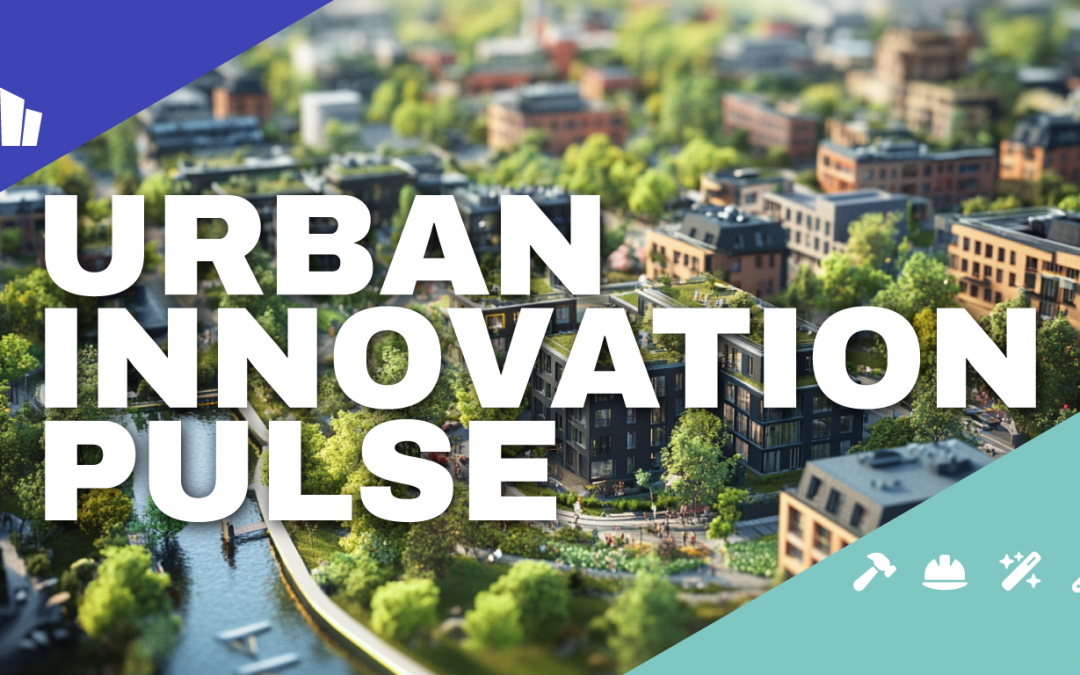Search Date Range: February 3, 2025 – February 10, 2025
This week’s Urban Innovation Pulse highlights key innovations in the built environment from February 3 to February 10, 2025. From AI-driven energy optimization in smart buildings to blockchain-based waste management in smart cities, advancements in self-healing materials, and the emergence of vertical urban forests, this report explores how technology is shaping the future of our cities and infrastructure.
Smart Buildings
- AI-Driven Energy Optimization in New York, USA
In New York, a new AI-based platform integrates real-time weather data, occupancy levels, and historical energy use to automatically adjust HVAC systems, resulting in a 15–20% reduction in energy consumption. autodesk.com
- IoT-Based Building Health Monitoring in Tokyo, Japan
Large residential complexes in Tokyo are adopting IoT-based health monitoring systems to detect issues like pipe leaks, electrical faults, and structural changes, alerting maintenance staff immediately to reduce repair costs and extend building longevity. humansofglobe.com
- Dynamic Smart Façades in Singapore
Singapore is implementing smart façade technologies, such as electrochromic windows and adaptive materials, in high-rise buildings. These systems adjust their properties based on external conditions, reducing the energy load from lighting and HVAC systems. fortender.com
- Zero-Energy Commercial Building in Singapore
Keppel Bay Tower in Singapore has become the country’s first zero-energy commercial building following a significant renovation, emphasizing sustainable urban renewal by retrofitting existing structures and reducing carbon footprints. fortender.com
Smart Cities
- Blockchain-Based Waste Management in London, UK
London has deployed a public privacy register using blockchain technology to track data usage and enhance transparency in waste management, securing urban records and streamlining services. startus-insights.com
- 5G-Powered Traffic Management in Seoul, South Korea
Seoul is experimenting with 5G technology to manage traffic in real time, reducing congestion and emissions. 5G sensors and cameras communicate traffic data to city control centers, allowing precise adjustments to traffic lights and public transit schedules. sensgreen.com
- Digital Twin Models for Flood Management in Copenhagen, Denmark
Copenhagen is adopting digital twin technology to create dynamic models of the city, allowing authorities to simulate flood scenarios, adjust infrastructure plans, and prioritize at-risk areas for faster emergency responses. startus-insights.com
- Urban Air Mobility Initiatives in Dubai, UAE
Dubai is advancing urban air mobility with the development of air taxi systems, aiming to launch the first operational routes by 2026, revolutionizing urban transportation. forbes.com
Advanced Materials
- Self-Healing Concrete in Delft, Netherlands
Researchers at Delft University of Technology have developed self-healing concrete technology that is entering large-scale production, enhancing the durability and lifespan of structures. fortender.com
- Transparent Wood for Sustainable Construction in Stanford, USA
Stanford University has developed a transparent wood material as a sustainable alternative to glass in windows, offering excellent thermal insulation and potential applications in modern architectural designs. fortender.com
- Graphene-Infused Materials in Manchester, UK
A breakthrough in graphene-enhanced concrete is enabling lighter, more durable structures that require less material, reducing overall environmental impact. fortender.com
- Biodegradable Insulation Materials in Toronto, Canada
In Canada, biodegradable insulation made from recycled wood pulp is being developed to reduce construction waste while providing excellent thermal performance. fortender.com
Emerging Concepts
- Vertical Urban Forests in Milan, Italy
Milan is implementing vertical forest urban planning, integrating greenery into high-rise buildings to improve air quality and urban biodiversity. startus-insights.com
- Floating Urban Farms in Singapore
Singapore is proposing floating urban farms to address land scarcity and enhance local food production, contributing to urban sustainability. forbes.com
- Hyperloop Transportation Systems in Los Angeles, USA
Los Angeles is considering hyperloop transportation systems as a high-speed, sustainable alternative to traditional transit methods, potentially revolutionizing urban mobility. startus-insights.com
- Gondola Networks as Urban Transit Solutions in Queenstown, New Zealand
New Zealand startup Whoosh is set to tackle traffic congestion with an innovative gondola-like ride-hailing network in Queenstown, with construction beginning next year and the system expected to be operational by 2027. fortender.com
About Urban Innovation Pulse
Urban Innovation Pulse is produced as part of the Future Construction Hub project, coordinated by Metropolia University of Applied Sciences in Finland.
The report synthesizes the latest innovations in four key areas of the built environment:
- Smart Buildings: The latest technologies enhancing energy efficiency, safety, and user comfort.
- Smart Cities: Digital solutions promoting sustainable and efficient urban living.
- Advanced Materials: Cutting-edge materials transforming construction.
- Emerging Concepts: Forward-looking visions for cities and infrastructure.
Report Content and Sources
Urban Innovation Pulse compiles insights from diverse and credible sources, including:
- Leading research institutions
- Conferences and publications on urban technology
- Innovations from global companies
- Sustainability-focused organizations
This ensures a comprehensive, up-to-date snapshot of trends shaping the built environment. Each highlight comes from a unique, authoritative publication with a valid, clickable link. No source appears more than once within the same category.
To maintain accuracy and credibility, Wikipedia is excluded as a source. We prioritize references to original publications and verified research. Furthermore, the website rakennusalantietotaito.fi is not used as a source to avoid self-referencing.
